How to become a hot air balloon pilot: Have you ever dreamt of soaring through the sky, feeling the rush of the wind against your face and witnessing breathtaking views from above?
Well, becoming a hot air balloon pilot can turn that dream into a reality.
It’s not just any form of aviation; it’s an exhilarating and unique experience that will leave student pilots craving for more.
With the guidance of a flight instructor, you can obtain a pilots license and expand your horizons beyond powered aircraft.
Becoming a hot air balloon pilot requires dedication, training, and a love for adventure. It’s not your average 9-to-5 job; it’s a passion that takes student pilots to new heights both literally and figuratively.
For centuries, hot air balloons have captivated people around the world with their grace and beauty.
Now, it’s your turn to be part of this timeless tradition as a flight instructor, guiding aspiring pilots through their training to obtain their pilots license.
Flight instruction is the key to unlocking the sky’s wonders.
But where do you begin? The first step towards becoming a hot air balloon pilot is understanding the requirements and licenses involved in operating free balloons.
From commercial balloon pilots to flight instructors, there are various roles within balloon operations.
You’ll need to learn about airborne heat, master the skills under the guidance of a chief instructor, and gain instruction on all aspects of piloting aircraft.
Familiarizing yourself with federal aviation regulations is also crucial in your plan to become a hot air balloon pilot.
Whether you’re looking for thrills or considering turning your passion into a career, we’ve got you covered.
So buckle up (or should I say “strap in”) as we delve into the world of hot air ballooning and explore how you can become a certified hot air balloon pilot with a pilots license.
Learn all about the aircraft used, the airborne heat that keeps you afloat, and the federal aviation regulations that govern this exhilarating activity.

Understanding the Different Types of Hot Air Balloon Licenses
If you’ve ever dreamt of floating above the clouds in a hot air balloon aircraft, a private license is your ticket to making that dream a reality.
This type of license is perfect for those who want to experience the thrill and freedom of piloting a hot air balloon purely for recreational purposes, festivals, or even for business purposes.
It’s one of the most exciting things you can do! To obtain a private hot air balloon license for festivals and business purposes, aspiring pilots must meet certain requirements.
These typically include completing a set number of flight hours and passing written exams that cover topics such as meteorology, navigation, safety procedures, and managing money.
It’s important to note that these requirements may vary depending on your location and the things you plan to do with your hot air balloon, so be sure to check with your local aviation authority.
Once you hold a private hot air balloon license, you’ll have the privilege of taking friends and family on unforgettable flights.
Imagine soaring over picturesque landscapes, feeling the gentle breeze against your face as you navigate through the sky.
With this pilot training license, you can create memories that will last a lifetime. Additionally, you can participate in festivals and attract business to earn money.
Student License: Taking Your First Steps towards Becoming an Expert Pilot
If you’re serious about becoming a hot air balloon pilot but don’t yet meet all the qualifications for a private license, fear not!
The student license provides aspiring pilots with an opportunity to gain valuable experience and knowledge under the guidance of an instructor.
Additionally, participating in festivals can be a great part of your training journey while also earning some money.
With a student license in hand, you’ll embark on an exciting journey of learning and skill development.
You’ll receive comprehensive training on various aspects of hot air ballooning, including pre-flight preparations, inflation techniques, takeoff and landing procedures, as well as emergency protocols.
Festivals are a big part of the hot air ballooning community, offering opportunities to showcase your skills and connect with other enthusiasts.
Money can be earned by participating in sponsored events and competitions.
While holding a student license doesn’t grant you full privileges like flying solo or taking passengers along for rides just yet, it serves as an essential stepping stone towards achieving those goals.
Think of it as laying down solid foundations upon which your future career as a hot air balloon pilot, part of festivals, will be built.
It is also a great opportunity to gain experience and earn money.
Commercial License: Turning Your Passion into a Profession
For those who wish to turn their love for hot air ballooning into a career, pilot training and a commercial license are the keys that unlock numerous opportunities.
With this license, you’ll have the ability to offer commercial services such as scenic tours, aerial photography, and even participate in hot air balloon festivals.
One can acquire this license to pursue their passion professionally. Becoming a commercial hot air balloon pilot requires dedication and commitment.
In addition to meeting the requirements for a private license, you’ll need to accumulate more flight hours and demonstrate advanced piloting skills.
You’ll also undergo rigorous training in areas specific to commercial operations, such as passenger safety and customer service.
One part of the training includes learning about passenger safety and customer service.
Once you obtain your commercial license, the sky’s the limit! You can launch your own hot air balloon business or join an existing company as a pilot.
Imagine being able to share your passion with others while earning a living doing what you love most, all as a part of a thriving industry.
Understanding the different types of hot air balloon licenses is essential when pursuing a career in this exhilarating field.
Whether you’re looking for recreational flights or aiming to become a professional pilot, each license offers its own unique set of privileges and requirements.
So take that first step towards becoming a licensed hot air balloon pilot and prepare for an adventure like no other!
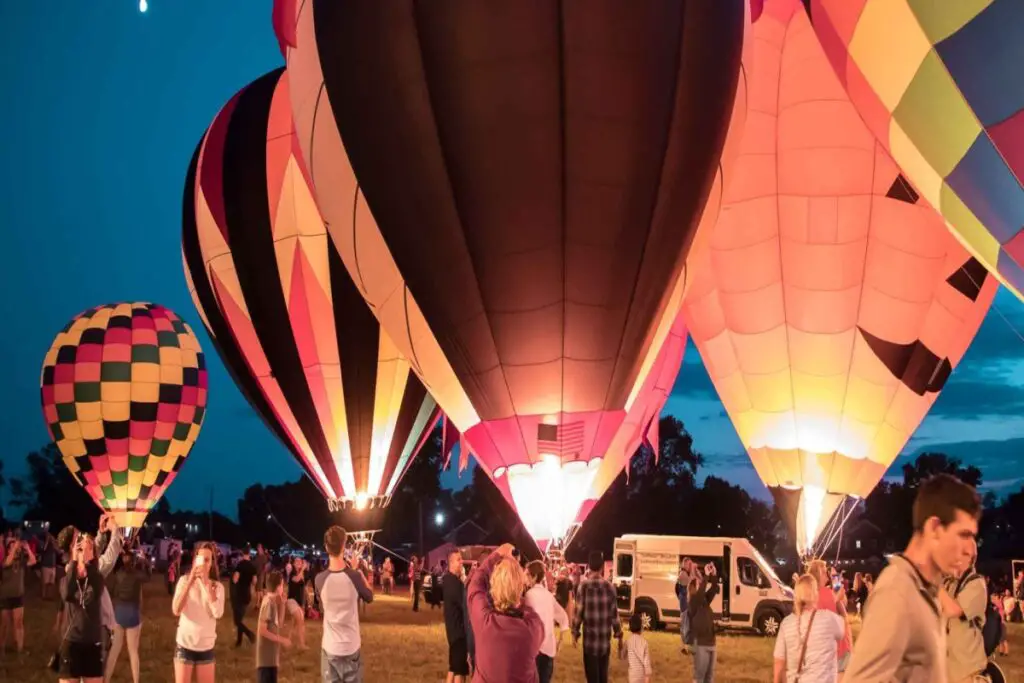
FAA Hot Air Balloon Pilot Requirements
To become a hot air balloon pilot in the United States, you must meet certain age requirements set by the Federal Aviation Administration (FAA).
The FAA mandates that aspiring pilots must be at least 16 years old to obtain a student pilot certificate.
However, to pursue a commercial hot air balloon pilot license, you must be at least 18 years old.
These age restrictions ensure that individuals have reached an appropriate level of maturity and responsibility before taking on the responsibilities of operating a hot air balloon.
Medical Certifications:
In addition to age restrictions, the FAA also requires prospective hot air balloon pilots to hold valid student licenses and private licenses.
This ensures that pilots are physically fit and capable of safely operating a hot air balloon.
Aspiring pilots must undergo a medical examination performed by an FAA-approved aviation medical examiner.
The examination assesses various aspects of health, including vision, hearing, cardiovascular fitness, and overall physical well-being.
By obtaining student licenses and private licenses and medical certification, pilots demonstrate their ability to handle the physical demands associated with flying a hot air balloon.
Language Proficiency Standards:
Effective communication is crucial for safe operations in aviation, including for individuals aspiring to obtain a private license or student license as hot air balloon pilots.
Therefore, the FAA has established language proficiency standards for these pilots to ensure they can effectively communicate with air traffic control and other personnel during flight operations.
Pilots must demonstrate English language proficiency through oral assessments conducted by authorized examiners.
By meeting these language proficiency standards, pilots with a private license or student license can effectively communicate instructions and receive critical information while piloting their hot air balloons.
Written Exams:
Before embarking on flight training for a hot air balloon license, prospective pilots are required to pass written exams administered by the FAA.
These exams cover various topics essential for safe and knowledgeable operation of hot air balloons.
Some of the subjects covered include regulations specific to ballooning activities, meteorology principles relevant to understanding weather patterns during flights, navigation techniques for maintaining proper course, and more.
By passing these exams, pilots demonstrate their understanding of the theoretical aspects of hot air balloon operations.
Meeting FAA Requirements: Meeting the FAA requirements outlined above is crucial for individuals aspiring to become hot air balloon pilots.
It ensures that pilots possess the necessary skills, knowledge, and physical capabilities to operate a hot air balloon safely.
By adhering to age restrictions, obtaining medical certifications, demonstrating language proficiency, and passing written exams, aspiring pilots lay the foundation for successful flight training towards acquiring a hot air balloon pilot license.
Becoming a licensed hot air balloon pilot involves fulfilling these FAA requirements as well as undergoing practical flight training under the guidance of certified flight instructors.
The combination of theoretical knowledge and hands-on experience equips pilots with the necessary skills to navigate various weather conditions.
Control altitude and direction, perform emergency procedures, and ensure passenger safety during flights.
So if you’ve ever dreamed of taking to the skies in a majestic hot air balloon as its skilled pilot, start by familiarizing yourself with the FAA’s requirements.
With determination and dedication, you can embark on an exciting journey towards becoming a licensed hot air balloon pilot!
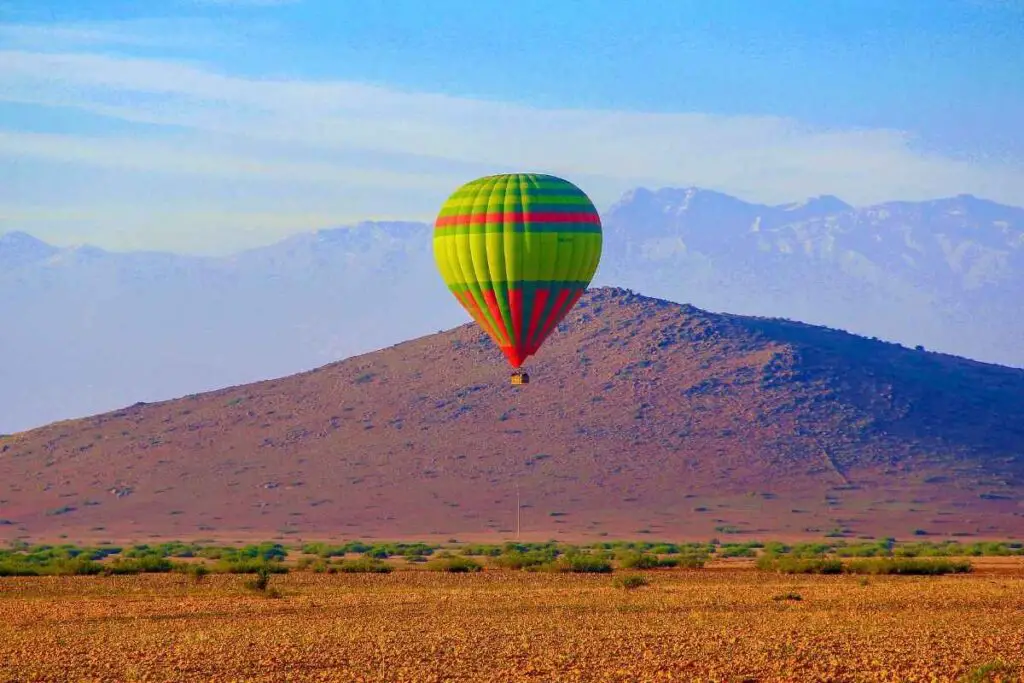
Steps to Becoming a Hot Air Balloon Pilot and Cost Considerations
Step 1: Obtain Medical Certification
Before embarking on the journey to become a hot air balloon pilot, aspiring aviators must first obtain a student license.
This step ensures that pilots are physically fit to operate a hot air balloon.
It involves undergoing a thorough medical examination by an aviation medical examiner who assesses the individual’s overall health and fitness for flying.
Step 2: Complete Ground School Training
Once medical certification is secured, the next step is to enroll in ground school training.
Ground school provides aspiring pilots with essential theoretical knowledge about hot air ballooning, including aerodynamics, weather patterns, navigation techniques, emergency procedures, and regulations.
This classroom-based training equips pilots with the necessary foundation before taking to the skies.
Step 3: Log Flight Hours Under Supervision
After completing ground school training, it’s time for hands-on experience. Aspiring hot air balloon pilots must log flight hours under the supervision of a certified instructor or experienced pilot.
This allows them to gain practical skills and familiarize themselves with operating a hot air balloon in different conditions.
During this phase, pilots learn how to handle various aspects of ballooning such as inflating and deflating the envelope.
Controlling altitude and direction using burners and vents, reading wind patterns, and executing safe takeoffs and landings.
The more flight hours logged under supervision, the better prepared pilots will be for independent flying.
Step 4: Pass Practical Exams
To become a licensed hot air balloon pilot, passing practical exams is crucial. These exams typically involve demonstrating proficiency in all aspects of hot air ballooning.
Pilots are assessed on their ability to perform pre-flight inspections, navigate according to flight plans while considering weather conditions, communicate effectively with ground crews or passengers if applicable, execute emergency procedures confidently if required.
The practical exams test both technical skills and decision-making abilities in real-time scenarios, including balloon flight.
It is essential for pilots in the hot air balloon ride industry to showcase their competence and ensure the safety of themselves, passengers, and crew members in tethered balloon rides.
Additionally, their expertise is crucial for the success of their balloon business.
Step 5: Consider Cost Considerations
While pursuing a career as a hot air balloon pilot and obtaining a pilots license can be thrilling, it’s important to consider the financial aspects involved. Costs can vary depending on several factors:
-
Flight Time: The number of flight hours required to become a licensed pilot, including commercial balloon pilots, can significantly impact overall costs. More flight time, whether it be for hot air balloon rides or tethered balloon rides, means more expenses related to fuel, maintenance, and equipment usage for both traditional pilots and those in the balloon business.
-
Instruction Fees: Enrolling in ground school training and receiving instruction from certified professionals, including balloon flight, involves fees that aspiring pilots must account for. Tethered balloon rides and starting a balloon business also require financial consideration.
-
Equipment: Hot air ballooning requires specific equipment such as the envelope, burner systems, baskets, pilot training, and other accessories. These items come at a cost that should be factored into the budget.
-
Examination Fees: Practical exams and licensing procedures often involve fees that aspiring pilots need to pay during their journey towards becoming licensed hot air balloon pilots.
To manage these costs effectively, aspiring pilots can explore options such as scholarships or sponsorships offered by aviation organizations or seek out financing plans specifically designed for aviation training.
Hour and Experience Requirements for Teaching and Commercial Certification
Private Pilot License: The First Step
Before diving into the hour and experience requirements for teaching or pursuing a career as a commercial hot air balloon pilot, it is essential to obtain a private hot air balloon pilot license.
This initial step ensures that aspiring pilots have gained the necessary knowledge and skills to operate a hot air balloon safely.
Additional Requirements for Teaching Certification
In addition to obtaining a private pilot license, those interested in becoming hot air balloon instructors must fulfill specific hour and experience requirements.
These additional requirements are put in place to ensure that instructors possess the expertise needed to guide and educate future pilots effectively.
Logged Flight Hours as an Instructor under Supervision
To qualify for teaching certification in pilot training, aspiring instructors must accumulate a minimum number of logged flight hours while working under supervision.
These hours serve as valuable hands-on experience, allowing them to gain practical insights into instructing others on hot air balloon operations.
Testing Requirements: Demonstrating Knowledge and Competency
Apart from flight hours, pilot training and teaching certification may also involve testing requirements.
Aspiring instructors may need to pass knowledge tests that assess their understanding of various topics related to hot air ballooning and pilot training.
These tests ensure that instructors have acquired the necessary theoretical knowledge to impart onto their students confidently.
Commercial Certification: Taking It Up a Notch
For those aiming to offer commercial services as hot air balloon pilots, additional hour and experience requirements come into play.
These requirements are designed to equip commercial pilots with the skills and expertise needed for passenger operations or other commercial activities.
More Flight Hours, Greater Expertise
Commercial certification often entails accumulating more flight hours compared to teaching certification.
The rationale behind this requirement is simple – more time spent in the sky, including balloon pilots license.
Translates into increased proficiency and familiarity with different flying conditions, enhancing safety during commercial operations.
Specific Experience Related to Passenger Operations or Commercial Activities
In addition to amassing flight hours, aspiring commercial pilots may need to gain specific experience related to passenger operations or other commercial activities.
This could involve practicing various maneuvers and procedures that are commonly encountered when flying with passengers, such as takeoffs and landings in different weather conditions.
Meeting Medical Certificates and Commercial Capacity
Apart from the hour and experience requirements, hot air balloon pilots seeking teaching or commercial certification must also meet certain medical certificate standards and demonstrate their ability to handle the responsibilities associated with these roles.
Ensuring Fitness for Flight: Medical Certificate Requirements
Hot air balloon pilots, whether they intend to teach or offer commercial services, must possess a valid medical certificate.
This certificate ensures that pilots are physically fit to operate a hot air balloon safely. It is essential for maintaining the well-being of both the pilot and their passengers during flights.
Demonstrating Capability in a Commercial Setting
For those pursuing a career as commercial hot air balloon pilots, it is crucial to showcase their ability to handle the responsibilities that come with operating in a commercial capacity.
This involves demonstrating proficiency in managing passenger interactions, adhering to safety protocols, and ensuring an enjoyable experience for all aboard.

Exploring the Process and Costs of Becoming a Hot Air Balloon Pilot in the UK
Becoming a hot air balloon pilot in the United Kingdom is an exciting endeavor that requires navigating through a specific set of regulations established by the Civil Aviation Authority (CAA).
These regulations ensure safety and proficiency among pilots, making it essential to understand the process involved.
Meeting Requirements and Obtaining Certification
To embark on your journey towards becoming a hot air balloon pilot in the UK, there are several requirements you must fulfill.
Firstly, age restrictions apply, with individuals needing to be at least 17 years old to obtain a license. Aspiring pilots must acquire medical certification to demonstrate their physical fitness for flying.
The next step for commercial balloon pilots involves completing theoretical exams that cover topics such as meteorology, navigation, and aviation law.
These exams assess your knowledge and understanding of crucial concepts necessary for safe piloting and obtaining a balloon pilot’s license.
Once you have successfully completed the theoretical exams as a commercial balloon pilot, it’s time to log flight hours under supervision.
This practical training allows you to gain hands-on experience while being guided by experienced instructors.
Logging these flight hours is vital as it helps you develop the necessary skills and confidence required for independent flying.
Navigating Practical Assessments
After accumulating a lot of supervised flight hours, you will need to pass practical assessments conducted by certified examiners.
These assessments evaluate your ability to handle various situations that may arise during hot air balloon flights.
Demonstrating proficiency in areas such as takeoff, landing procedures, emergency protocols, and communication is crucial for success.
Practical assessments not only test your technical skills but also assess your decision-making abilities as a commercial balloon pilot under different circumstances.
It is important to remain calm and composed while showcasing your competence throughout these evaluations.
Understanding Costs Involved
When pursuing your dream of becoming a hot air balloon pilot in the UK, it’s essential to consider the costs associated with training for a license.
The expenses can vary depending on factors such as flight time, instruction fees, examination fees, and equipment requirements.
Flight time is a significant cost factor as it directly impacts the number of hours you spend in the air during training.
Instruction fees cover the expertise provided by experienced pilots and instructors who guide you through the process.
Examination fees are necessary for taking theoretical exams and practical assessments.
There may be a lot of costs associated with obtaining medical certification, purchasing specialized equipment like flight suits or helmets, and maintaining your license once obtained.
It’s crucial to budget accordingly and have a clear understanding of these expenses before embarking on your journey.
Pursuing Your Dream Within the UK’s Aviation Framework
Becoming a hot air balloon pilot in the UK requires dedication, commitment, and an understanding of the specific process and costs involved.
By following the regulations set by the Civil Aviation Authority (CAA), meeting age restrictions, obtaining medical certification, completing theoretical exams, logging supervised flight hours.
Passing practical assessments, and considering associated expenses diligently, you can work towards achieving your dream.
Remember that becoming a hot air balloon pilot is not only about fulfilling regulatory requirements but also about developing skills and knowledge that ensure safe flying practices.
Embrace this unique adventure within the UK’s aviation framework while keeping in mind both the excitement and responsibilities that come with being a licensed hot air balloon pilot.
So start exploring your passion for flying a lot high in a hot air balloon today!
Cost Considerations for Becoming a Hot Air Balloon Pilot in the UK:
Becoming a hot air balloon pilot is an exciting endeavor, but it’s important to consider the financial aspects, especially within the UK.
Pursuing your dream of taking to the skies in a hot air balloon requires careful budgeting and planning.
Let’s dive into the specific cost considerations you should be aware of when embarking on this journey.
Training Costs:
Training to become a hot air balloon pilot involves various expenses that need to be taken into account. Flight time is one crucial aspect where costs can quickly add up.
Aspiring pilots must accumulate a certain number of flight hours before obtaining their license, and each hour comes with its own price tag.
On average, expect to spend around £200-£300 per hour for flight training. In addition to flight time, instruction fees are another significant expense.
Professional instructors provide guidance throughout your training journey, teaching you essential skills and knowledge required for safe flying.
Instruction fees vary depending on factors such as location and instructor experience, but they typically range from £1000-£3000.
Licensing and Examination Fees:
Obtaining a hot air balloon pilot license requires passing examinations conducted by regulatory authorities.
These exams assess your theoretical understanding of aviation principles and safety procedures. However, these exams come with their own costs that aspiring pilots must consider.
The Civil Aviation Authority (CAA) charges examination fees which usually amount to around £150-£250 per exam attempt.
Keep in mind that multiple exams may be necessary, so it’s important to include these fees in your budgeting calculations.
Equipment Costs:
Hot air ballooning necessitates investing in specialized equipment that ensures safe and enjoyable flights.
The most significant upfront cost is purchasing or leasing a hot air balloon itself, which can range from £20,000-£60,000 depending on factors like size and condition.
There are essential accessories and equipment you’ll need, such as burners, baskets, fuel tanks, and safety gear. These items can cost several thousand pounds collectively.
It’s crucial to research and compare prices from reputable suppliers to ensure you’re getting the best value for your investment.
Ongoing Maintenance:
Once you’ve obtained your license and acquired the necessary equipment, it’s important to factor in ongoing maintenance costs.
Regular inspections, repairs, and maintenance of your hot air balloon are essential for safe operation.
Maintenance expenses can vary depending on the condition of your equipment and how often you fly.
Annual inspections by certified technicians typically range from £500-£2000.
Budgeting for occasional repairs or part replacements is advisable to keep your balloon in top-notch condition.
Insurance Costs:
Insurance is a vital aspect of being a hot air balloon pilot as it provides financial protection against any unforeseen accidents or damages.
The cost of insurance coverage will depend on various factors such as the value of your equipment, experience level, and flying history.
On average, annual insurance premiums for hot air balloon pilots in the UK range from £500-£1500.
It’s essential to obtain comprehensive liability coverage that includes both personal injury and property damage protection.
Being aware of these cost considerations allows aspiring hot air balloon pilots to plan their budget effectively and make informed decisions about pursuing their dream career.
By accounting for training costs, licensing fees, equipment expenses, ongoing maintenance needs, and insurance requirements upfront, you can better prepare yourself financially for this thrilling adventure in the skies above the UK!
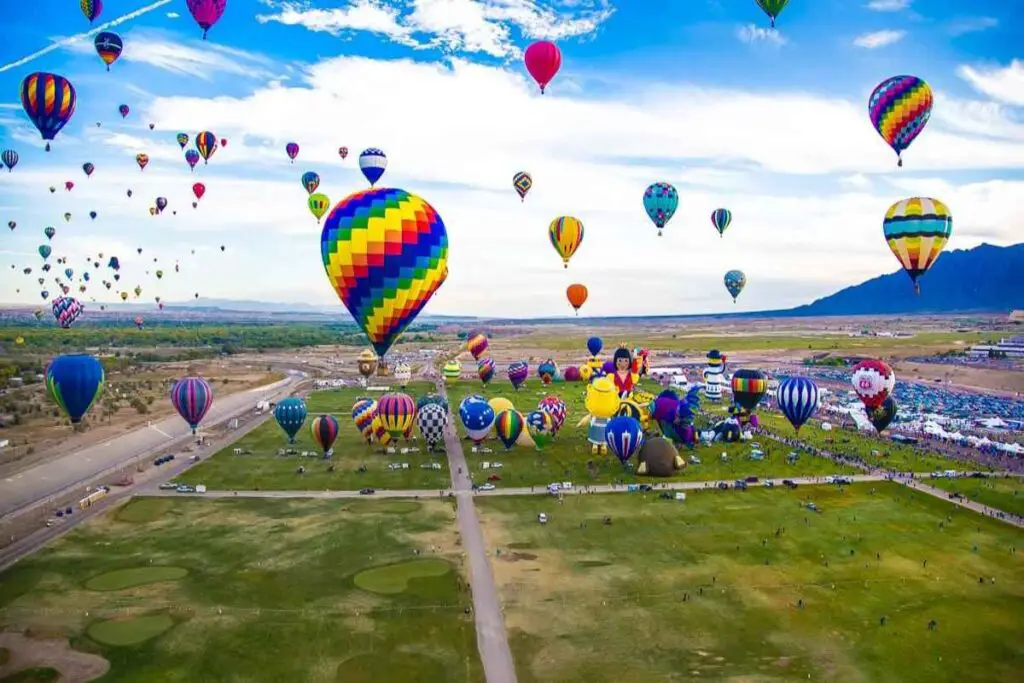
Finding a Training School and Meeting FAA Criteria
Choosing the Right Training School: A Crucial Step
Becoming a hot air balloon pilot is an exciting journey that starts with choosing the right training school. This decision can make all the difference in your path to becoming a licensed pilot.
With so many flight schools out there, it’s important to carefully consider your options.
When selecting a training school, keep in mind factors such as instructor experience, safety record, curriculum content, and available resources.
These elements play a significant role in determining the quality of instruction you will receive.
You want to ensure that you’re learning from experienced instructors who have a deep understanding of hot air ballooning.
Research different flight schools and read reviews from past students to get an idea of their reputation. Look for schools that prioritize safety and have a strong safety record.
It’s also crucial to assess the curriculum content offered by each school. A comprehensive program should cover both theoretical knowledge (ground school) and practical skills (training flights).
Meeting FAA Criteria: Ensuring Regulatory Compliance
In addition to choosing the right training school, it’s essential to ensure that they meet Federal Aviation Administration (FAA) criteria.
The FAA sets standards for flight training programs to ensure pilots are well-prepared and meet regulatory requirements.
By enrolling in an FAA-approved flight school, you can be confident that the training you receive aligns with industry standards.
The FAA rigorously evaluates these schools based on various criteria including instructor qualifications, facility standards, instructional methods, aircraft maintenance procedures, and more.
An important aspect of meeting FAA criteria is having designated FAA inspectors involved in the evaluation process.
These inspectors visit flight schools regularly to assess their compliance with regulations and review their training programs.
Moreover, when nearing the end of your training journey, you’ll need to undergo examination by a designated FAA Flight Examiner.
This examiner will evaluate your skills and knowledge through both written exams and practical flight tests.
It’s crucial to choose a training school that prepares you thoroughly for these examinations.
Finding a Suitable Training School: Your Path to Success
Now that we understand the importance of choosing the right training school and meeting FAA criteria, let’s explore some steps you can take to find a suitable institution:
-
Research Flight Schools: Start by researching different flight schools in your area or those that offer programs you are willing to travel for. Look for schools with positive reviews, experienced instructors, and comprehensive curriculum.
-
Visit Schools: Arrange visits to potential flight schools to get a feel for their facilities, aircraft, and overall environment. This will help you assess if it aligns with your expectations and goals.
-
Talk to Instructors: Engage in conversations with instructors at each school you’re considering. Ask about their experience, teaching methods, and how they prepare students for FAA examinations.
-
Consider Safety Record: Safety should be a top priority when selecting a training school. Look into the safety records of different institutions and inquire about their safety protocols during training flights.
-
Evaluate Curriculum Content: Review the curriculum offered by each school to ensure it covers both theoretical knowledge (ground school) and practical skills (training flights). A well-rounded program is essential for becoming a competent hot air balloon pilot.
-
Assess Available Resources: Consider the resources available at each flight school such as access to modern equipment, simulators, study materials, and support services. These resources can greatly enhance your learning experience.
By following these steps and considering all the factors discussed above, you’ll be on your way towards finding a suitable training school that meets FAA criteria.
Remember that thorough research is key when embarking on this exciting journey of becoming a hot air balloon pilot!
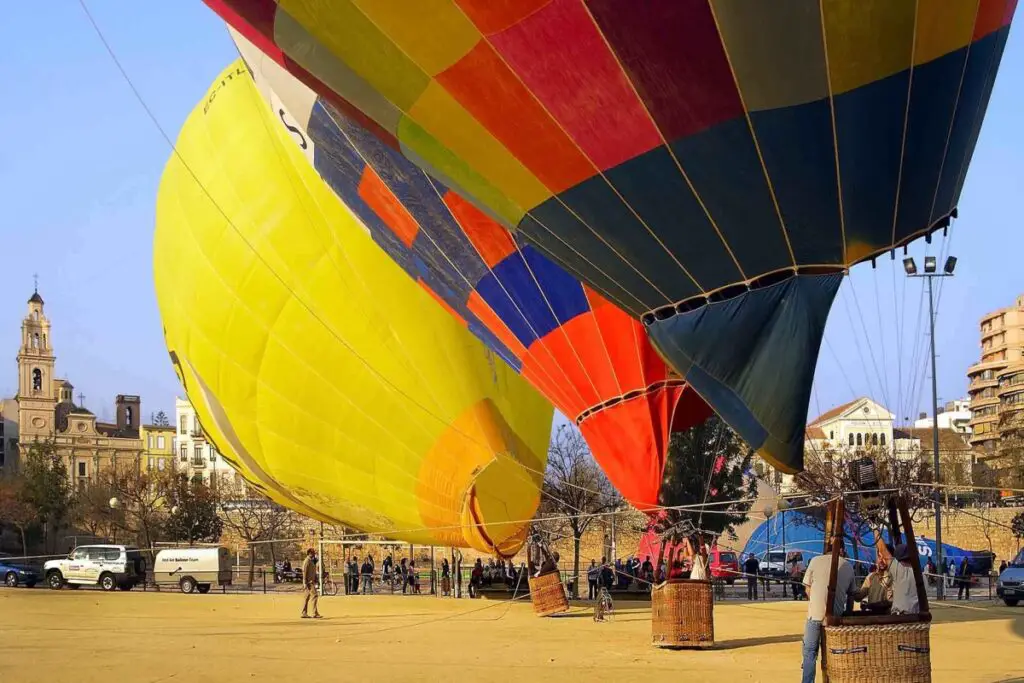
Joining as a Pilot or Crew Member: Volunteering Opportunities
Looking to become a hot air balloon pilot? Well, you’re in luck! Aspiring pilots can kick-start their journey by joining established pilots or crews as volunteers.
These volunteering opportunities provide an incredible platform for individuals to learn from experienced professionals while contributing to various aspects of ballooning operations.
Hands-On Learning with Experienced Professionals
Volunteering in the world of hot air ballooning offers aspiring pilots the chance to gain hands-on experience and knowledge.
By actively participating in crew activities or assisting during flights, individuals can immerse themselves in the world of ballooning before obtaining their own license.
It’s like getting a backstage pass to the captivating world of hot air balloons!
Enhancing Skills and Knowledge
Practical experience is invaluable. Volunteering allows aspiring pilots to enhance their skills and knowledge necessary for flying high in the sky.
By working alongside experienced crew members and pilots, individuals can learn the ropes, understand safety protocols, and master essential techniques required for piloting a hot air balloon.
Exploring Different Aspects of Ballooning Operations
As a volunteer crew member or pilot-in-training, you’ll have the opportunity to explore various aspects of ballooning operations.
From preparing equipment before takeoff to assisting passengers during flights, every moment spent as part of a crew offers valuable insights into the multifaceted world of hot air ballooning.
Here are some exciting tasks you might find yourself doing as a volunteer:
-
Assisting with pre-flight preparations: Get ready for lift-off by helping inflate the balloon, ensuring all equipment is secure, and performing safety checks.
-
Crew coordination during flights: Work closely with other crew members and communicate effectively during flights to ensure smooth operations.
-
Assisting passengers: Provide support and guidance to passengers on board throughout their hot air balloon journey.
-
Post-flight procedures: Help with deflating and packing up the balloon, ensuring it’s ready for the next adventure.
Building Connections and Networking
Volunteering not only offers hands-on experience but also provides an excellent opportunity to build connections within the ballooning community.
By working alongside experienced pilots and crews, you’ll have the chance to network with industry professionals who can guide you on your path to becoming a licensed pilot.
These connections may open doors to mentorship opportunities, additional training resources, or even future employment prospects.
Setting Yourself Up for Success as a Future Pilot
Volunteering as a crew member or student pilot is like laying down the groundwork for your future success in hot air ballooning.
The experiences gained through volunteering will contribute towards meeting qualifications required for obtaining a pilot license.
Many licensing authorities require aspiring pilots to accumulate a specific number of flight hours before they can take their exams.
Volunteering can help you rack up those essential hours while learning from experienced instructors and pilots.
So, if you’re passionate about soaring through the skies in a magnificent hot air balloon, consider joining established pilots or crews as a volunteer.
It’s an exciting opportunity to gain valuable experience, enhance your skills and knowledge, connect with industry professionals, and set yourself up for an incredible journey as a licensed hot air balloon pilot!
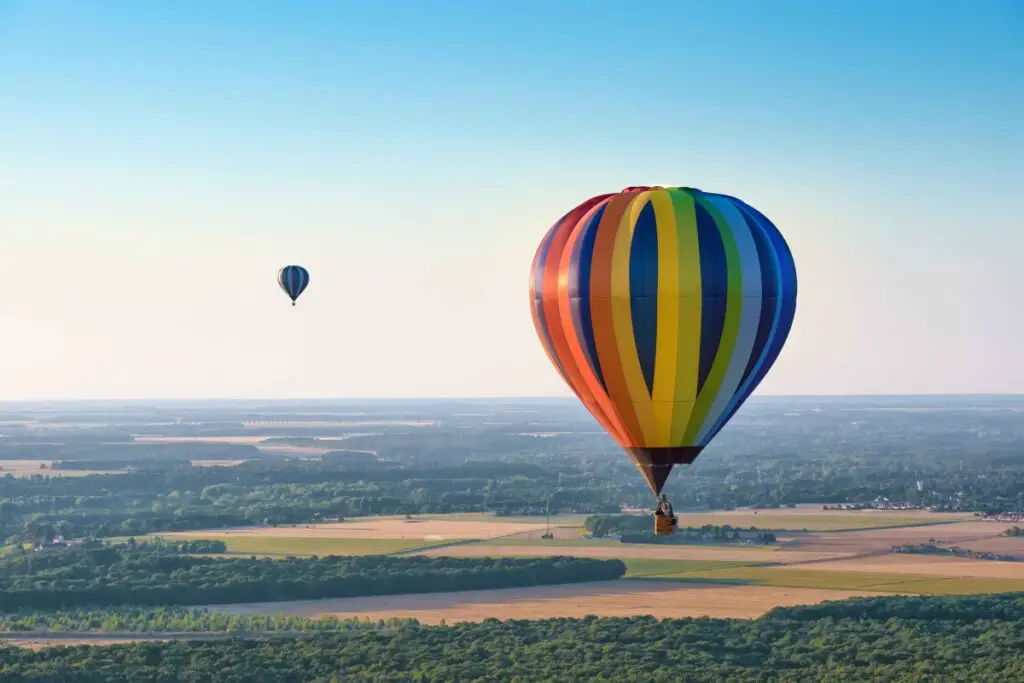
Overview of Licensing Requirements for Private, Student, and Commercial Pilots
Private Pilot License: Taking to the Skies
If you’ve ever dreamt of soaring through the clouds in a majestic hot air balloon, obtaining a private pilot license is your first step towards turning that dream into reality.
A private pilot license allows you to fly a hot air balloon for recreational purposes or personal transportation.
To obtain this coveted license, you’ll need to meet certain requirements set forth by the Federal Aviation Regulations (FARs).
-
Pilot Certification: The first requirement on your journey to becoming a hot air balloon pilot is obtaining a student pilot certificate. This certification demonstrates that you have met the basic knowledge requirements and are ready for flight training.
-
Flight Practical Knowledge Test: Once you’ve obtained your student pilot certificate, it’s time to hit the books and prepare for the flight practical knowledge test.
-
This comprehensive exam evaluates your understanding of various aspects of hot air ballooning, including navigation techniques, meteorology, airspace regulations, emergency procedures, and more.
-
Flight Training: After passing the knowledge test with flying colors (pun intended), it’s time to gain some hands-on experience in the sky! You’ll need at least 10 hours of flight training from an authorized instructor before you can take your final checkride.
-
Final Checkride: The final hurdle on your path to acquiring a private pilot license is the checkride. During this examination, an FAA designated examiner will evaluate your skills as a hot air balloon pilot. They will assess your ability to perform maneuvers safely and efficiently while adhering to all relevant regulations.
Once you’ve successfully completed these steps and demonstrated proficiency in both theoretical knowledge and practical skills, congratulations are in order! You’re now officially a licensed private hot air balloon pilot.
Student Pilot Certificate: Laying the Foundation
Before embarking on any journey towards becoming a hot air balloon pilot, it’s essential to obtain a student pilot certificate.
This certification serves as your entry ticket into the world of aviation and allows you to undergo flight training under the guidance of a qualified instructor.
-
Requirements: To obtain a student pilot certificate, you must be at least 14 years old and possess a solid understanding of English language proficiency.
-
Flight Training: Once you have your student pilot certificate in hand, you can begin flight training with an authorized instructor. During this phase, you’ll learn the fundamentals of hot air ballooning, including pre-flight inspections, basic maneuvers, emergency procedures, and more.
-
Solo Flight Endorsement: After completing a specific number of flight hours and demonstrating proficiency in various skills, your instructor will endorse your logbook for solo flights. This endorsement signifies that you’re ready to take control of the balloon on your own.
-
Knowledge Test Preparation: Alongside flight training, you’ll also need to prepare for the knowledge test. Study materials such as textbooks and online resources will help you grasp concepts related to meteorology, navigation techniques, regulations, aerodynamics, and other crucial aspects of hot air ballooning.
-
Knowledge Test Completion: Once adequately prepared, it’s time to put your knowledge to the test! The FAA-administered knowledge test evaluates your understanding of hot air balloon operations and ensures that you’re well-equipped with the necessary theoretical knowledge.
By obtaining a student pilot certificate and undergoing comprehensive flight training while honing both practical skills and theoretical knowledge, you’ll lay a strong foundation for pursuing higher levels of licensure in the future.
Commercial Pilot License: Taking Your Skills to New Heights
If soaring through the sky as a professional hot air balloon pilot is more than just a passing fancy for you, obtaining a commercial pilot license is an essential step towards turning that passion into a rewarding career.
-
Private Pilot License: Before embarking on the journey towards a commercial pilot license, you must first obtain a private pilot license.
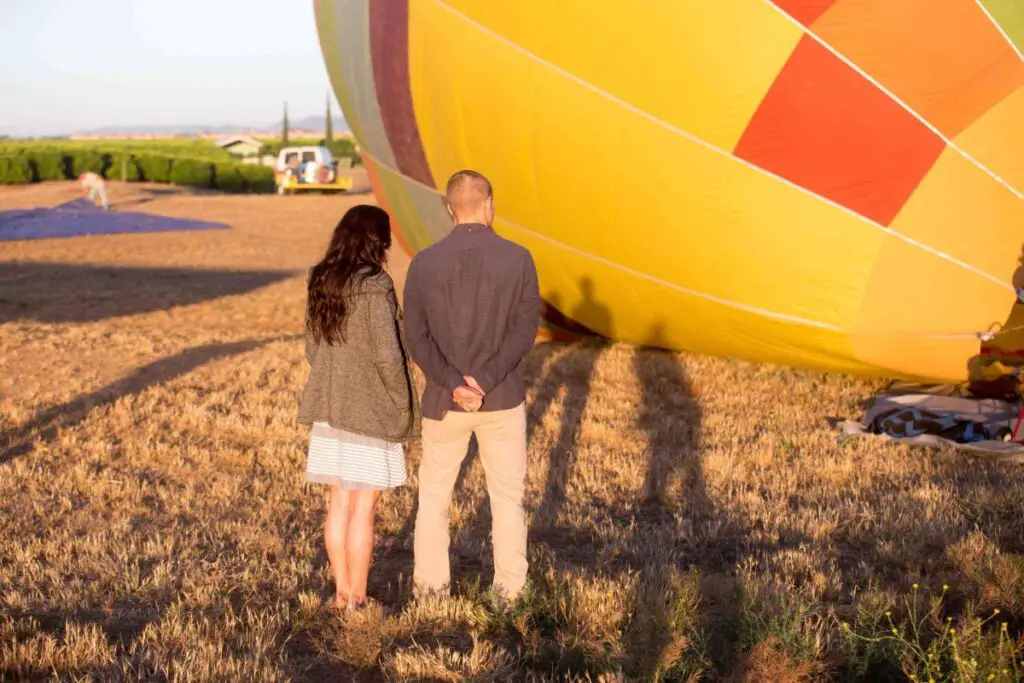
How do you become a Hot Air Balloon Pilot?
Becoming a hot air balloon pilot is an exciting and rewarding journey that requires dedication, training, and a passion for adventure.
In this comprehensive guide, we will take you through the step-by-step process of how to become a licensed hot air balloon pilot.
Prom the necessary requirements to the practical assessments, we’ll cover all aspects to help you achieve your dream of soaring through the skies.
Obtain Medical Certification
Before embarking on your hot air balloon pilot journey, it’s essential to obtain medical certification. This ensures that you are physically fit to handle the responsibilities of piloting a balloon.
Schedule an appointment with an aviation medical examiner who will conduct a thorough examination to determine your fitness for flying.
Once you receive your medical certificate, you can proceed to the next steps with confidence.
Log Flight Hours
To become a skilled hot air balloon pilot, logging flight hours is crucial.
The more time you spend in the air, the more experience and confidence you gain in handling different weather conditions and scenarios.
Seek opportunities to fly with experienced pilots or enroll in flight schools that offer hands-on training programs.
By accumulating flight hours under proper guidance, you’ll develop the necessary skills and decision-making abilities required for safe piloting.
Pass Written Exams
Knowledge is power. You’ll need to pass written exams that cover various topics such as meteorology, aerodynamics, regulations, navigation procedures, emergency protocols, and more.
Study diligently using resources recommended by experienced pilots or aviation authorities.
Practice answering sample questions and seek clarification on any areas where you feel unsure.
Remember, acing these exams demonstrates your understanding of critical concepts essential for safe ballooning.
Practical Assessments
In addition to written exams, practical assessments play a significant role in becoming a licensed hot air balloon pilot. These assessments evaluate your ability to demonstrate the necessary skills in piloting a balloon.
You’ll be assessed on tasks such as pre-flight inspections, launching and landing procedures, maneuvering techniques, emergency responses, and navigation.
Prepare for these assessments by practicing with experienced pilots or attending training programs that focus on hands-on training.
Fulfill Licensing Requirements
To become a hot air balloon pilot, you must fulfill specific licensing requirements set by aviation authorities. These requirements may vary depending on your location, so it’s crucial to research and understand the regulations applicable to you.
Typically, you’ll need to complete a minimum number of flight hours (both as pilot-in-command and as an observer), pass written exams, undergo practical assessments, and meet age restrictions.
Maintaining a clean record with no history of substance abuse is often a prerequisite for obtaining a license.
By following this comprehensive guide on how to become a hot air balloon pilot, you’ll gain valuable insights into the steps involved in achieving your dream.
Remember that dedication, perseverance, and continuous learning are key factors in becoming a successful pilot. So strap yourself in and get ready for an adventure-filled journey through the skies!

Achieving Your Dream of Becoming a Hot Air Balloon Pilot
Becoming a hot air balloon pilot is not an easy feat. It takes unwavering dedication, perseverance, and an unbridled passion for aviation.
If you have always dreamed of soaring through the skies in a majestic hot air balloon, it’s time to buckle up and embark on this thrilling journey.
To become a hot air balloon pilot, you must first obtain the necessary certifications and licenses.
This involves undergoing extensive training and fulfilling specific requirements set by aviation authorities.
The process may seem daunting at first, but with determination and the right mindset, you can conquer any challenges that come your way.
This section aims to inspire aspiring pilots by highlighting success stories and sharing tips for overcoming challenges throughout the journey.
Achieving your dream of becoming a hot air balloon pilot is no small feat. It requires hard work, resilience, and the ability to overcome obstacles along the way.
These stories will serve as motivation for aspiring pilots like yourself. They will show you that with dedication and perseverance, anything is possible.
You’ll hear tales of individuals who started from scratch but eventually soared high in the sky as skilled hot air balloon pilots.
We will provide valuable tips on how to overcome common challenges faced during the journey towards becoming a pilot.
From managing time effectively during training to dealing with setbacks or failures, we’ll offer practical advice based on real-life experiences.
Readers will be encouraged to set goals, seek mentorship, and embrace continuous learning as they work towards achieving their dream.
Setting clear goals is crucial when pursuing any dream or career path. Aspiring hot air balloon pilots should define their objectives early on in order to stay focused throughout their journey.
Whether it’s obtaining a specific license or flying in a renowned hot air balloon event, having clear goals will provide direction and motivation.
Seeking mentorship is another invaluable step towards becoming a hot air balloon pilot.
Connecting with experienced pilots who have already walked the path you aspire to follow can provide guidance, support, and insider knowledge.
Mentors can offer advice on training programs, share their own experiences, and even provide opportunities for hands-on learning.
Embracing continuous learning is essential in any field, especially aviation. Aspiring pilots should constantly seek opportunities to expand their knowledge and skills.
This could involve attending workshops or seminars, reading books and articles about hot air ballooning, or joining online communities where they can connect with fellow enthusiasts.
With determination and the right mindset, individuals can turn their aspirations into reality and experience the joy of piloting hot air balloons.
Becoming a hot air balloon pilot requires unwavering determination and the right mindset. It’s not just about acquiring the necessary licenses; it’s about embracing the challenges that come along with it.
The journey may be long and arduous at times, but the reward of piloting hot air balloons is immeasurable.
The key to success lies in staying committed to your dream and maintaining a positive attitude throughout the process.
Remember that setbacks are inevitable but temporary. By viewing them as opportunities for growth rather than roadblocks, you’ll develop resilience that will propel you forward.
As you progress on your journey towards becoming a hot air balloon pilot, don’t forget to enjoy every moment along the way.
Take time to appreciate the beauty of ballooning as you embark on solo flights or offer tethered balloon rides to others.
Embrace the freedom of flight and savor each unique experience that comes your way.
Remember: You have what it takes to achieve your dream of becoming a hot air balloon pilot! Soar high with determination, embrace challenges, and let the skies be your playground.

Conclusion
Congratulations on taking the first step towards realizing your dream of becoming a hot air balloon pilot!
Throughout this guide, we have explored the various aspects involved in obtaining your license and fulfilling the requirements set by the FAA and other relevant authorities.
Now, let’s summarize the key points and provide you with some actionable steps to move forward. Firstly, it is crucial to understand the different types of hot air balloon licenses available.
Depending on your aspirations and goals, you can pursue a private, student, or commercial pilot license.
Each has its own set of requirements and privileges that cater to different levels of involvement within the industry.
To become a hot air balloon pilot in the United States, you must meet specific FAA requirements.
These include being at least 16 years old for a student pilot certificate and 18 years old for private or commercial licenses.
You will need to pass a medical examination conducted by an FAA-approved aviation medical examiner.
The process of becoming a hot air balloon pilot involves several steps that require dedication and financial considerations.
You will need to undergo flight training from an FAA-certified instructor, accumulate flight hours as both a student and private pilot, and pass written exams as well as practical tests.
For those interested in teaching or obtaining commercial certification as a hot air balloon pilot, additional experience requirements apply.
Teaching opportunities can be pursued after gaining substantial flight experience as well as meeting specific criteria outlined by regulatory bodies.
If you are based in the UK, there are similar processes involved in becoming a licensed hot air balloon pilot.
However, it is important to note that regulations may vary slightly from those in the United States.
Proper research into UK-specific licensing requirements is essential before embarking on your journey.
Cost considerations play a significant role in pursuing your dream of becoming a hot air balloon pilot.
Flight training expenses can vary depending on factors such as location, instructor fees, and equipment rentals.
It is advisable to thoroughly research and budget for these costs to ensure a smooth progression through the licensing process.
Finding a reputable training school that meets FAA criteria is paramount to your success as a hot air balloon pilot.
Look for schools with experienced instructors, well-maintained equipment, and positive reviews from past students.
This will provide you with the best foundation for learning and gaining practical experience.
If you are eager to get involved in the hot air balloon community even before obtaining your license, consider joining as a pilot or crew member through volunteering opportunities.
This will allow you to gain valuable insights, network with industry professionals, and further immerse yourself in this thrilling world.
In conclusion, becoming a hot air balloon pilot requires dedication, perseverance, and financial investment.
By understanding the specific requirements set by regulatory bodies such as the FAA or relevant authorities in your country, you can chart a clear path towards achieving your dream.
Remember to undertake thorough research into flight schools, budget wisely for training costs, and seize opportunities to gain hands-on experience within the industry.
Now that you have a better grasp of what it takes to become a hot air balloon pilot, it’s time to take action!
Start researching flight schools in your area or reach out to organizations offering volunteering opportunities. The sky awaits – go chase your dream!

FAQs
Q1: How long does it take to become a hot air balloon pilot?
A: The duration of becoming a licensed hot air balloon pilot varies depending on factors such as individual progress and availability of training hours. On average, it may take several months up to one year or more.
Q2: Can I become a hot air balloon pilot if I have no prior flying experience?
A: Yes! You can start from scratch without any previous flying experience. However, be prepared for comprehensive training programs that cover both theoretical knowledge and practical skills.
Q3: Are there any physical requirements to become a hot air balloon pilot?
A: While there are no specific physical fitness standards, you will need to pass an aviation medical examination conducted by an FAA-approved medical examiner to ensure you meet the necessary health criteria.
Q4: Can I fly a hot air balloon commercially after obtaining my private pilot license?
A: No, a private pilot license only allows you to fly for personal purposes. To fly commercially and offer services such as passenger rides or instruction, you will need to obtain a commercial pilot license.
Q5: Are there any age restrictions for becoming a hot air balloon pilot?
A: Yes, in the United States, you must be at least 16 years old to hold a student pilot certificate and 18 years old for private or commercial licenses. Age requirements may vary in different countries.
Q6: How much does it cost to become a hot air balloon pilot?
A: The cost of becoming a hot air balloon pilot can range from several thousand dollars up to tens of thousands, depending on factors such as location, training hours required, and equipment rentals.
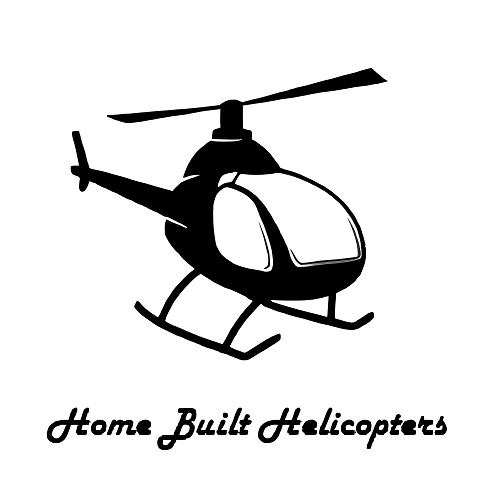
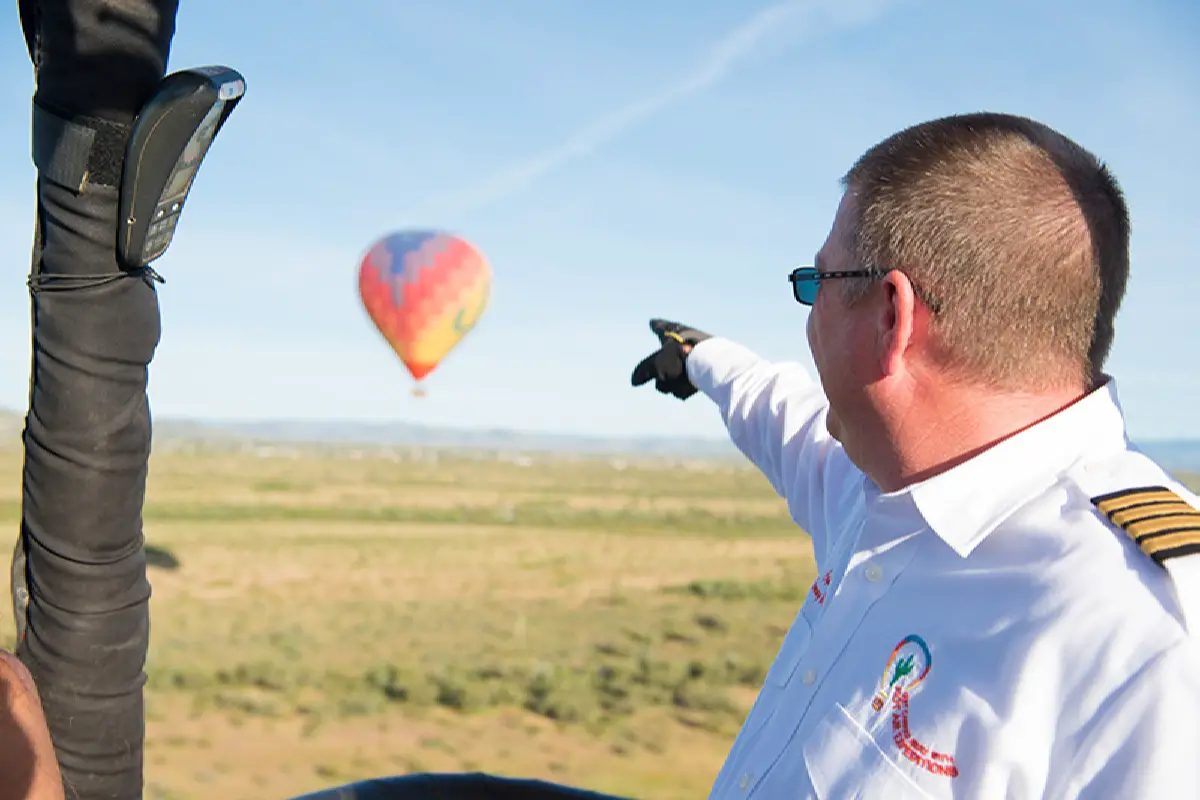
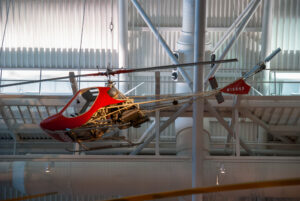
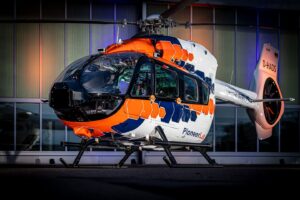



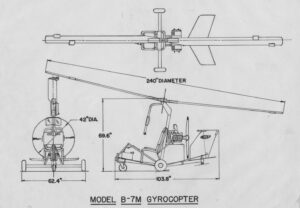
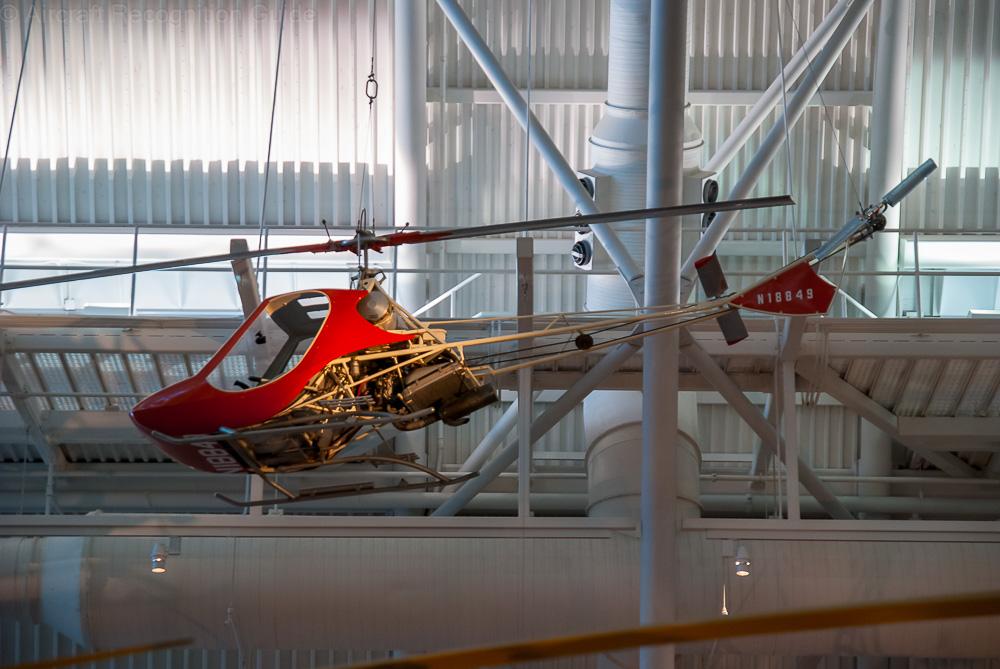


Leave a Reply